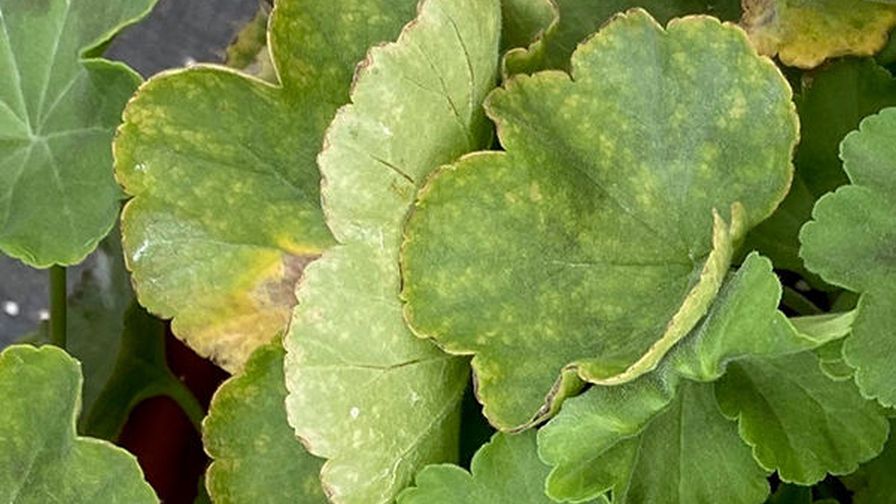Plant Health Lessons You Can Learn From COVID-19 Testing
The COVID-19 virus has assaulted communities throughout the world with unprecedented challenges and tragedies. Millions of people have gotten sick, suffered, and/or died. Unimaginable numbers of people have lost income, jobs, and support. The operations of educational systems, businesses, and medical systems face uncertain futures. All these consequences, from a novel virus pathogen, are new experiences for our generation who are striving to survive this pandemic.
However, one aspect of this COVID-19 pandemic is not new to us. COVID-19 reminds us of what we already knew, that pathogen testing is extremely important for human health and well-being.
In fact, the discussions and debates regarding COVID-19 testing can serve as a reference for the testing dynamics involved with plant disease diagnosis and management in agriculture.
Disease Confirmation Relies on Testing
In a rare example of virtually universal consensus, people realize testing is absolutely essential to confirm the presence of COVID-19. If no test is administered, then there is no possible confirmation that COVID-19 infection took place. Symptoms may be present or absent, mild or severe, but if there is no test, there remains only speculation.
In general, confirmation of a plant pathogen on a crop likewise is dependent on testing. Like COVID-19, the pathogens that affect plants are not visible with the unaided eye. Microscopic fungi, bacteria, and nematodes and sub-microscopic viruses need to be confirmed with appropriate tests. Experienced growers and other field personnel may have a very educated, experienced feeling about the possible presence and role of a pathogen; however, diagnosing the disease on a crop without including a test remains to some degree a guess.
We should not overstate this dependence on testing, since there are exceptions to this confirmation-requires-testing rule. As field professionals know, powdery mildew on vegetable and fruit crops results in the very visible development of mycelial and spore growth on the surfaces of plants. You can readily recognize such signs without a formal lab test. Most rust pathogens of crops result in the signature orange to brown fungal pustules on plant foliage. You can diagnose rust disease on most crops without clinical testing, though identifying the exact rust species again requires lab work.
Pathogen Diversity: What to Test For?
While there is little debate testing is necessary in this COVID-19 era, exactly what to test for is a bit more involved.
Throughout the world, the COVID-19 virus exists as several different mutated strains. Due to the existence of virus strains, medical diagnosticians and researchers must thoughtfully conduct research to ensure COVID-19 diagnostic tests react to all known variants.
This pandemic initially started in China with strain L of the virus. Health officials soon detected strain S, the first detected mutated variant of COVID-19. Along the way, strain V showed up. Presently, strain G and its variant strains GR and GH mostly plagues the world.
Medical researchers must ensure diagnostic COVID-19 tests react to all of the known strains. Otherwise, they risk having false negative results if a strain or two goes undetected.
Another complication? In addition to current pandemic concerns, COVID-19 is hardly the only respiratory pathogen that plagues us. Some symptoms of COVID-19 can mimic any of the multitude of cold and flu virus diseases, thereby making diagnosis more complicated.
Crop Diseases Require Broad Testing, Too
What do we test for in the agricultural world? The wide range of pathogens that can cause similar symptoms complicates plant disease diagnosis. Any one of several fungal, bacterial, or viral agents can cause particular foliar, flower, or fruit problems.
Different fungal or nematode invaders can damage roots and vascular systems, resulting in overlapping symptoms. Therefore, the agricultural diagnostician often must sort through the symptoms and arrive at a short-list of probable causal agents.
In the interest of being thorough, ag technicians often run multiple tests so they miss nothing.
For example, they may test a leaf spot sample for a fungal agent, as well as two different bacterial ones. They will subject distorted, malformed leaves or flowers to several different virus assays to make sure they do not omit a causal virus. Another example? They may test diseased roots for a soilborne fungus pathogen as well as test for parasitic soil nematodes with an extraction process.
In parallel with human pathogens that occur as various strains, plant pathogens can also exist in the forms of different species, strains, races, pathotypes, and other variations on a microbial theme.
Testing strategies sometimes need to account for such diversity. The Xanthomonas bacterium causes a bacterial spot disease of pepper and tomato. Researchers have documented that this pathogen is quite diverse and consists of four species, all of which look identical in culture plates. Some of these Xanthomonas isolates infect pepper only, some infect only tomato, while others can cause disease on both crops. Differentiating between the various species requires certain tests and assays.
For more, continue reading at GrowingProduce.com.










